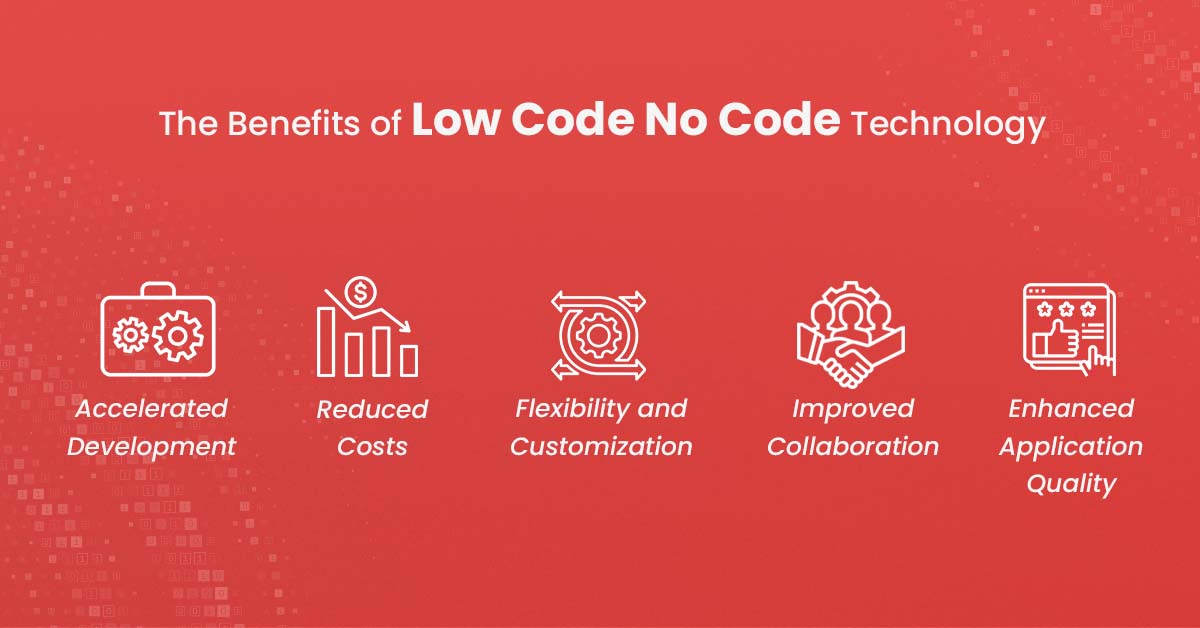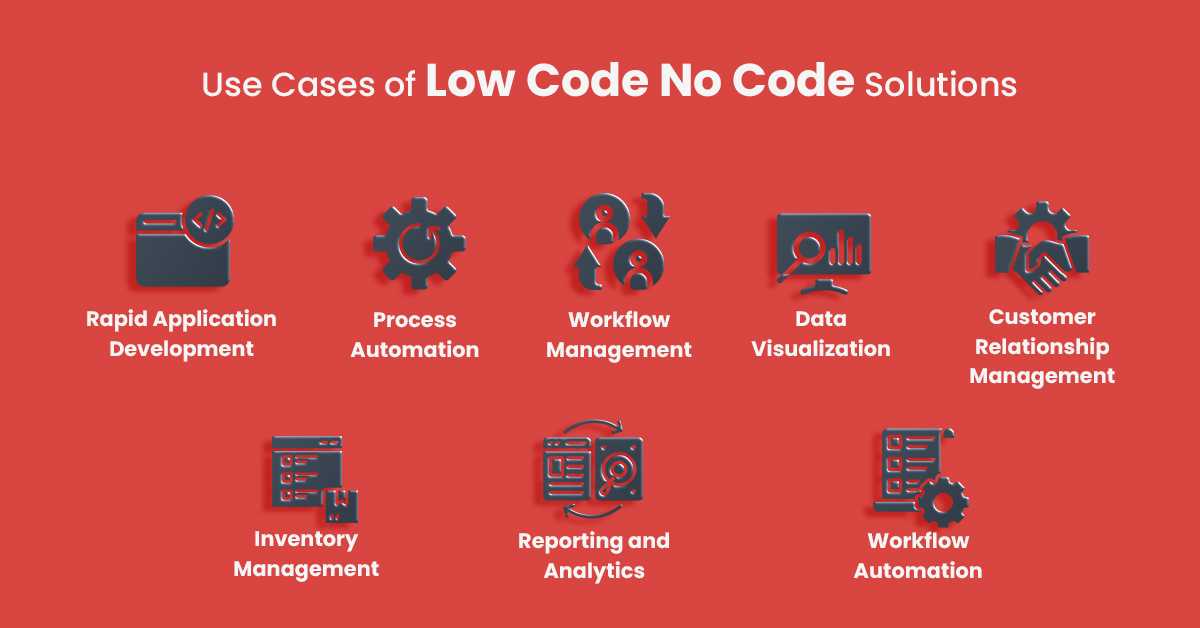In today’s fast-paced digital landscape, businesses are constantly seeking innovative ways to develop applications quickly and efficiently. Low code no code technology has emerged as a powerful solution, empowering users to create applications without extensive coding knowledge. This revolutionary approach is transforming the software development process, enabling businesses to bring their ideas to life in record time.
What is Low Code No Code Technology?
Low code no code technology is a programming approach that allows users to develop applications with minimal coding knowledge. It provides a visual environment where users can create applications using drag-and-drop tools or a limited amount of code. This technology eliminates the need for extensive training and coding expertise, making it accessible to both developers and non-developers.
Low code platforms offer a wide range of features and functionalities that simplify the application development process. These platforms typically provide a graphical user interface (GUI) and prebuilt templates, components, and modules that accelerate development. With low code no code technology, businesses can develop applications faster, reduce development costs, and improve collaboration between teams.

The Benefits of Low Code No Code Technology
- Accelerated Development: Low code no code technology enables businesses to develop applications at a rapid pace. With visual development environments and drag-and-drop interfaces, developers can create applications quickly without the need for extensive coding. This allows businesses to get their products and services to market faster, gaining a competitive edge.
- Reduced Costs: Traditional software development often requires extensive coding and a team of developers. Low code no code technology significantly reduces the amount of coding required, lowering development costs. With fewer developers needed, businesses can allocate their resources more efficiently, saving time and money.
- Flexibility and Customization: Low code no code platforms offer a high degree of flexibility, allowing businesses to tailor applications to their specific needs. These platforms provide prebuilt components and modules that can be customized to meet specific requirements. This flexibility enables businesses to create applications that align with their unique workflows and processes.
- Improved Collaboration: Low code no code platforms promote collaboration between developers and non-developers. With visual interfaces and intuitive tools, non-technical users can actively participate in the application development process. This fosters increased collaboration, knowledge sharing, and cross-functional teamwork.
- Enhanced Application Quality: Low code no code platforms incorporate built-in quality assurance tools and processes. These tools help developers identify and rectify errors early in the development process, resulting in higher quality applications. With improved quality, businesses can enhance customer satisfaction and user experience.
Key Features of Low Code No Code Platforms
When selecting a low code no code platform, it is essential to consider certain key features. These features ensure a seamless and efficient application development process:
- Visual Development Environment: A user-friendly visual development environment is a crucial feature of low code no code platforms. This environment enables users to create applications using drag-and-drop tools, eliminating the need for extensive coding.
- Drag-and-Drop Interface: Low code no code platforms typically provide a drag-and-drop interface that simplifies the application development process. This interface allows users to select and arrange components, modules, and templates effortlessly.
- Prebuilt Components and Templates: A comprehensive library of prebuilt components and templates is an essential feature of low code no code platforms. These prebuilt resources accelerate development by providing ready-to-use elements that can be customized to meet specific requirements.
- Seamless Integration: Low code no code platforms should seamlessly integrate with other software systems using APIs or prebuilt connectors. This integration enables businesses to leverage existing systems and data, enhancing the overall functionality of their applications.
- Scalability: Scalability is a crucial consideration when selecting a low code no code platform. The platform should be able to support the creation of applications of any size, catering to the needs of both small businesses and large enterprises.
Checkout our Web stories – The Rise of Low-Code/No-Code Solutions
Who Does Low Code No Code Technology Help?
Low code no code technology benefits a wide range of individuals and organizations. Let’s explore how different stakeholders can leverage this technology:
- IT Leaders: Low code no code technology empowers IT leaders to quickly develop and deploy applications without the need for extensive coding. This saves time and money, allowing IT departments to focus on more strategic tasks and innovation.
- Business Managers: Business managers and their teams can utilize low code no code technology to create departmental applications using a visual interface. This eliminates the need for coding expertise and accelerates the application development process.
- Enterprise Architects: Enterprise architects can leverage low code no code technology to implement enterprise-wide transformation plans. With prebuilt connectors and integration capabilities, these platforms facilitate tech stack modernization, enabling faster implementation of architectural changes.
- Developers: Low code no code tools help developers save time by automating repetitive tasks and providing templates and high-quality code snippets. This improves productivity and allows developers to focus on more complex and innovative aspects of application development.
Industries That Can Benefit from Low Code No Code Technology

Low code no code technology can cater to various industries, enabling them to develop applications tailored to their specific needs. Some industries that can benefit from this technology include:
- Professional Services: Professional services firms can leverage low code no code technology to develop custom applications that streamline their workflows and enhance client experiences.
- Manufacturing: The manufacturing industry can utilize low code no code platforms to develop applications that optimize production processes, track inventory, and improve supply chain management.
- Education: Low code no code technology can help educational institutions create interactive learning applications, manage student records, and streamline administrative tasks.
- Retail: Retail businesses can develop applications that enhance the customer shopping experience, manage inventory, and facilitate online transactions using low code no code platforms.
- Healthcare: Low code no code technology enables healthcare organizations to develop applications that improve patient care, streamline appointment scheduling, and enhance data management.
- Logistics: The logistics industry can benefit from low code no code technology by developing applications that optimize route planning, track shipments, and streamline warehouse management.
- Information Technology: Low code no code platforms can assist IT departments in developing custom applications for their organizations, enhancing productivity, and improving workflow management.
- Banking: Banks can leverage low code no code technology to develop applications that streamline financial processes, enhance customer experiences, and improve security measures.
- Government: Government agencies can utilize low code no code platforms to develop applications that improve citizen services, streamline administrative processes, and enhance data management.
- Real Estate: Low code no code technology can help real estate professionals develop applications that streamline property management, automate sales processes, and enhance customer experiences.
- Hospitality: The hospitality industry can benefit from low code no code technology by developing applications that enhance guest experiences, manage bookings, and streamline reservation processes.
- Nonprofit: Nonprofit organizations can leverage low code no code platforms to develop applications that aid in fundraising, volunteer management, and program administration.
Use Cases of Low Code No Code Solutions
Low code no code solutions offer a wide range of use cases, empowering organizations to develop applications efficiently and effectively. Some popular use cases include:

- Rapid Application Development: Low code no code technology enables businesses to develop applications quickly, reducing time-to-market and responding rapidly to changing market conditions.
- Process Automation: Organizations can automate repetitive and manual processes using low code no code platforms. This improves operational efficiency and enables employees to focus on more strategic tasks.
- Workflow Management: Low code no code solutions can streamline workflow management by creating applications that automate task assignment, track progress, and facilitate collaboration between teams.
- Data Visualization: Businesses can leverage low code no code platforms to develop applications that visualize data, providing insights into key metrics and facilitating data-driven decision-making.
- Customer Relationship Management: Low code no code solutions enable businesses to develop custom CRM applications, enhancing customer interactions, managing sales pipelines, and improving customer satisfaction.
- Inventory Management: Organizations can develop applications using low code no code platforms to track inventory, manage stock levels, and automate reordering processes, improving efficiency in supply chain management.
- Reporting and Analytics: Low code no code technology enables businesses to develop applications that generate real-time reports and analytics, providing valuable insights into business performance.
- Workflow Automation: Low code no code platforms can automate complex workflows, eliminating manual tasks and reducing errors, resulting in increased productivity and efficiency.
Low Code vs. No Code Development: What’s the Difference?
While low code and no code development share similarities, there are distinct differences between the two approaches:
- Low Code Development: Low code development requires minimal coding knowledge and expertise. Users can create applications using visual drag-and-drop tools or a limited amount of code. Low code platforms provide a balance between customization and coding simplicity, allowing users to add more customization to their applications if desired.
- No Code Development: No code development eliminates the need for coding entirely. Users can create applications using graphical components and templates without writing any code. No code platforms are designed for business users with little to no coding experience, providing a simplified and intuitive interface.
The Rise of Low Code No Code Technology: Predictions and Numbers
The adoption of low code no code technology is expected to skyrocket in the coming years. According to Gartner, by 2025, 70% of new applications developed by enterprises will utilize low code or no code technologies, a significant increase from less than 25% in 2020.
The worldwide population of low code developers is projected to grow at a compound annual growth rate (CAGR) of 40.4% from 2021 to 2025. This growth rate is approximately 3.2 times the CAGR of the general population of developers worldwide.
In Conclusion
Low code no code technology has revolutionized the software development process, empowering businesses to create applications without extensive coding knowledge. With its accelerated development capabilities, reduced costs, and enhanced collaboration, this technology is poised to shape the future of application development.
From IT leaders to business managers, low code no code technology offers benefits to a wide range of stakeholders. Industries across the board, including professional services, manufacturing, education, retail, healthcare, logistics, information technology, banking, government, real estate, hospitality, and nonprofit organizations, can leverage this technology to streamline their operations and enhance customer experiences.
As the adoption of low code no code technology continues to grow, businesses must embrace its potential and capitalize on the benefits it offers. By utilizing low code no code platforms and exploring the various use cases, businesses can unlock new possibilities and create without limits. The future of application development is here, and it’s powered by low code no code technology.




